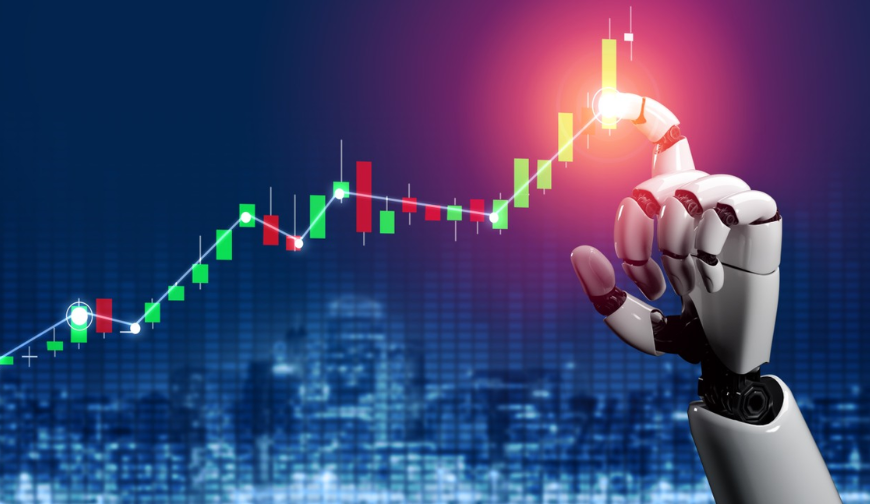In today’s fast-paced financial markets, the use of algorithms and artificial intelligence (AI) has become increasingly prevalent, revolutionizing the way trading is conducted. Algorithmic trading, also known as algo trading or black-box trading, refers to the use of computer programs and algorithms to execute trades automatically, based on predefined criteria and instructions.
Introduction
Algorithmic trading represents a significant shift from traditional manual trading methods. With the advent of AI, financial institutions and individual traders alike are harnessing the power of algorithms to analyze market data, identify trading opportunities, and execute trades with unparalleled speed and precision.
Evolution of Algorithmic Trading
Traditionally, trading in financial markets involved human brokers manually executing trades based on their analysis of market trends and economic indicators. However, this approach was limited by human biases, emotions, and the inability to process vast amounts of data quickly.
The emergence of algorithmic trading has transformed the landscape of financial markets by automating the trading process. Algorithms can analyze market data in real-time, identify patterns, and execute trades within milliseconds, far surpassing the capabilities of human traders.
Advantages of Algorithmic Trading with AI
One of the primary advantages of algorithmic trading with AI is its speed and efficiency. Algorithms can execute trades with lightning-fast speed, enabling traders to capitalize on fleeting market opportunities that would be impossible to capture manually.
Additionally, algorithmic trading minimizes the risk of human error. Emotions such as fear and greed can cloud judgment and lead to costly trading mistakes. By removing human intervention from the trading process, algorithms ensure consistent and disciplined execution of trading strategies.
Furthermore, AI-powered algorithms can conduct sophisticated market analysis, leveraging machine learning and data analytics techniques to identify trends, correlations, and anomalies in market data. This enables traders to make more informed decisions and adapt their strategies to changing market conditions effectively.
Strategies Used in Algorithmic Trading with AI
Various strategies are employed in algorithmic trading with AI, each tailored to exploit different market conditions and opportunities.
- Trend following: This strategy involves identifying and capitalizing on market trends by buying assets that are trending upwards and selling those trending downwards.
- Arbitrage opportunities: Algorithmic trading algorithms can identify price discrepancies between different markets or assets and exploit them for profit through arbitrage trading.
- Statistical arbitrage: This strategy involves exploiting pricing inefficiencies between related assets based on statistical models and historical data analysis.
- High-frequency trading: High-frequency trading algorithms execute a large number of trades at extremely high speeds, often capitalizing on small price discrepancies or market inefficiencies.
Challenges and Risks
While algorithmic trading with AI offers numerous benefits, it is not without its challenges and risks.
One challenge is ensuring the quality and reliability of the data used by algorithms. Inaccurate or incomplete data can lead to faulty analysis and erroneous trading decisions.
Another risk is the potential for over-reliance on algorithms. While algorithms can automate many aspects of trading, human oversight is still necessary to monitor and adjust trading strategies as needed.
Furthermore, algorithmic trading can exacerbate market volatility and unpredictability, especially during times of extreme market conditions or sudden events.
Future Outlook
The future of algorithmic trading with AI looks promising, with continued advancements in technology driving innovation in the financial markets. As AI algorithms become more sophisticated and capable of processing larger volumes of data, they will play an increasingly vital role in shaping the future of trading.
However, regulatory considerations remain an important factor in the adoption of algorithmic trading. Regulators must strike a balance between fostering innovation and ensuring market integrity and stability.
Conclusion
Algorithmic trading with AI has revolutionized the way trading is conducted in financial markets. By harnessing the power of algorithms and artificial intelligence, traders can execute trades with unprecedented speed, efficiency, and precision. While challenges and risks exist, the future outlook for algorithmic trading remains bright, with continued advancements in technology driving innovation and shaping the future of finance.
Unique FAQs:
- How does algorithmic trading differ from traditional trading methods? Algorithmic trading relies on computer programs and algorithms to execute trades automatically, while traditional trading methods involve manual execution by human traders.
- What are some common strategies used in algorithmic trading with AI? Common strategies include trend following, arbitrage opportunities, statistical arbitrage, and high-frequency trading.
- What are the advantages of algorithmic trading with AI? Advantages include speed and efficiency, minimization of human error, and enhanced market analysis capabilities.
- What are the risks associated with algorithmic trading? Risks include data quality and reliability issues, over-reliance on algorithms, and increased market volatility.
- What is the future outlook for algorithmic trading with AI? The future looks promising, with advancements in technology driving innovation, although regulatory considerations remain important for market integrity and stability.
